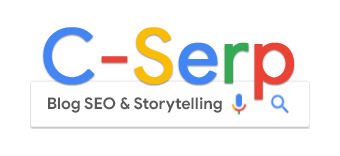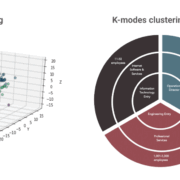How to use CRM data to inform and grow your PPC campaigns

In the world of digital advertising, data is king.
Yet, many PPC advertisers underutilize one of their most valuable sources of insights: their CRM data.
Whether you’re a B2B or B2C marketer, your CRM is a gold mine of customer information that can significantly enhance your paid media strategy.
To boost efficiency and scale, focus on the most impactful CRM data, such as:
- Job titles, industry, company size, and revenue for B2B.
- Age, gender, location, product preferences, and customer lifetime value (CLV) for B2C.
This article tackles how to use CRM data to refine your targeting, craft compelling ad messaging, and create more relevant website content.
Evaluate CRM data through clustering analysis
First, you need to know how to organize your data to get the insights you’ll deploy in your paid campaigns.
One powerful technique for organizing data is clustering analysis, which helps group similar customers based on shared characteristics.
For this, I prefer the k‑modes algorithm, an extension of the k‑means method.
The algorithm replaces means of clusters with modes – in other words, it replaces an aggregate average with attributes that appear frequently, which is much better for precise targeting.
This allows you to identify primary audience segments that are most valuable to your business. For example:
- B2B: Clustering leads and opportunities by job role, industry, company size, and annual revenue.
- B2C: Segmenting customers based on demographics, interests, purchase behavior, CLV, and engagement levels.
This analysis will help you uncover actionable insights to shape your advertising approach and ensure you focus on the right audiences.

3 ways to leverage CRM data for PPC advertising
Once you’ve identified key audience clusters, apply those insights across Google Ads, LinkedIn Ads, Meta Ads, and other paid platforms.
While there are additional use cases, let’s focus on the three mentioned above.
1. Refine targeting without hyper-fragmenting ad accounts
A common mistake is over-segmenting ad campaigns, which can lead to inefficient ad spend, limited insights, and hinder platform algorithms from optimizing performance.
Instead, leverage your CRM insights to refine audience targeting strategically:
- LinkedIn and Facebook audiences: Upload CRM data to create custom audiences and lookalike audiences, ensuring you’re targeting high-value prospects similar to your existing customers. (Note: A few significant new releases from LinkedIn add even more heft to this recommendation.)
- Keyword themes in Google Ads: Use CRM insights to identify the job titles, industries, or pain points that resonate most with your customers and optimize your keyword strategy accordingly.
2. Craft messaging with ads geared toward primary personas
Different customer segments respond to different messages.
Use your CRM data to create tailored ad copy, imagery, and CTAs that align with the needs and interests of your primary personas:
- B2B example: If your CRM data reveals that C-suite executives respond best to finesse and expertise-driven content, create ads promoting whitepapers or exclusive webinars.
- B2C example: If your data shows that younger demographics prefer discounts while older customers value premium quality, adjust your ad messaging accordingly.
3. Creating relevant website content
Your paid efforts shouldn’t stop at the ad level – your website must also reflect the personas you’re targeting.
By using CRM insights, you can optimize your site to better convert visitors into customers:
- B2B: If your highest-value customers are from enterprise-level companies, make sure your website has dedicated pages for enterprise solutions and case studies, with messaging tailored to address their specific pain points and needs. A common issue I’ve seen with agency clients is that their landing pages lack depth; often, distinct personas would benefit from pages with more refined messaging.
- B2C: If a key demographic is young professionals interested in sustainability, highlight eco-friendly product attributes and include social proof from like-minded customers.
These insights should extend beyond landing pages.
It’s crucial to gather and evaluate whether your brand positioning across the entire site reflects the common themes that emerge when analyzing different personas.
Final thoughts
Your CRM isn’t just a database – it’s a strategic asset that can transform your paid media performance.
You can drive more efficient and effective advertising campaigns by analyzing customer data through:
- Clustering.
- Refining targeting.
- Crafting tailored ad messaging.
- Ensuring your website content aligns with your audience.
One final note here: this is not a one-and-done initiative.
Use your judgment based on:
- How much and how quickly new data is entering your CRM.
- Any data cleanup projects that might alter the data.
- New product launches that could require fresh insights.
Use this information to schedule regular and ad-hoc updates to your analysis.
Don’t let your CRM data go to waste – use it to enhance your paid campaigns and increase your ROI.


